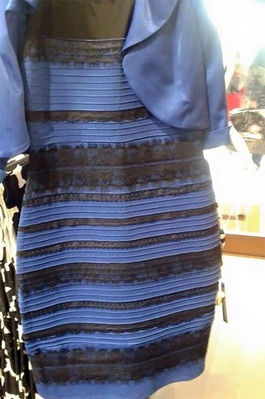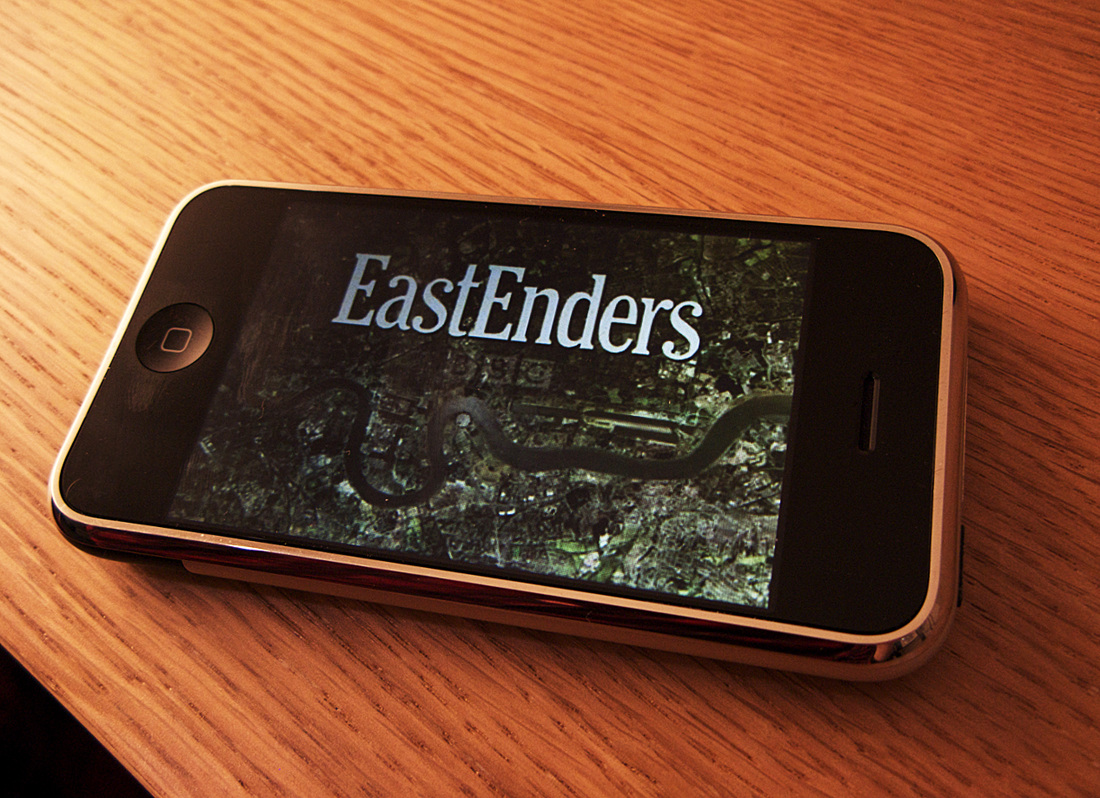|
The argument over the colour of a dress worn to a Scottish wedding this week has been the subject of much debate on the internet, but does the colour of the garment even matter? I don't think so.
At the wedding itself, singer Caitlin McNeill took a photo of the dress which confirmed, in her mind at least, that the dress was indeed black and blue. She shared it on her Tumblr blog, a fan page dedicated to Sarah Weichel. Weichel is a talent manager who represents several YouTubers including Hannah Hart. The people behind the dress, Roman Originals, also tweeted to confirm that the dress was indeed black and blue, but due to speculation they're now considering manufacturing it in white and gold too.
But as ever, that rational conclusion was not enough for the internet and social media began sharing the image across all platforms encouraging users to join team Black & Blue or team White & Gold. Taylor Swift was pro Black & Blue whilst Kim Kardashian was a staunch supporter of White & Gold. Vogue magazine weighed in with their view, The Independent turned to science writing an article to prove that we're all wired to see different colours due their varying wavelengths in different light. The Guardian, The Daily Mail and The Telegraph all ran stories insisting that social media had been turned into "two warring tribes" by the picture and using phrases like "the picture that almost broke the internet". And that's exactly why the colour of the dress doesn't matter. It could be any number of colour combinations, it probably looks different to someone who's colour blind, it can be explained away by any number of scientists or pantone colour charts. It really doesn't matter to anyone what colour the dress is. What does matter, and what people in my line of business should be taking note of, is how with the correct prompts, use of hashtags and celebrity endorsements; it's relatively easy to capture the imagination of a massive audience and leverage celebrities to get them to do your job for you. What matters is that #TheDress is now trending worldwide with an estimated 45.9 million views per hour and over 21,000 retweets per hour. What matters is that if you can catch the imagination of the internet, then you can turn a small, harmless story from a tiny little island in Scotland into an international viral sensation. That any product, love it or hate it, can get the marketing it needs to be successful with a few very subtle nudges that send ripples out across the wider web. Because that's all the internet is, a giant pond with an awful lot of people swimming in it, all trying to make waves. Those swimmers are also hungry to belong, eager to engage and respond to clever content and get behind a cause. If enough people make enough of a splash, then the media takes notice and real waves are made. It doesn't matter what colour the dress is. It only matters that the story is told, engaged with and shared.
0 Comments
Over a million tweets were sent during the BBC's Live EastEnders shows last night, making the special episodes the most tweeted about soap stories in British soap history. Now, I'm not a fan of EastEnders, in fact I'm not particularly keen on any serialised soaps on television today. However, I'm more than willing to accept that many millions of people enjoy them on a daily basis. It's also becoming increasingly clear that our sofa habits have evolved to be far more than just sitting transfixed by the goggle box. I'd read research over the last few years that suggested that almost 90% of television viewers now watch their favourite shows with a second device in hand, be it a smart phone, tablet or laptop. Data collected by online researchers last night proves that this is indeed becoming an increasing trend and that audiences need interaction as well as decent viewing. But what last night's EastEnders shows proved beyond all reasonable doubt is that communities of fans carry story lines on in social media with them, long after the episode has actually aired.
I watched my twitter feeds earnestly last night, as mentions of the soap began popping up all over the place from around 5:00pm onwards. Speculation was rife about 'whodunnit' and I even saw friends discussing it on Facebook, Tumblr and Google+. Kantar Social TV UK, a social media analytics company, were watching even more closely than I was, and their findings over the three shows are incredibly valuable to anyone involved in the television and social media worlds. Their data shows that 508,678 tweets were sent during the first live episode, yes, the one where the actress mistakenly referred to Ian Beale by his real name, Adam (Woodyatt). As speculation grew and the BBC scriptwriters did an excellent job of keeping their audience guessing, the second episode prompted a further 519,359 tweets. In the single minute after the killer was revealed (and no, I'm not going to tell you who it was, just search for #EELive on twitter) data suggests that over 30,000 tweets were sent in response to the revelation. That's around 500 tweets per second. Just let that sink in for a minute. 500 tweets per second. Imagine if your business or brand could encourage that kind of engagement? Hopefully you wouldn't have to have a murderer in your midst, but you get where I'm coming from, right? This got me thinking more about how social media can be leveraged by interacting with 'fans'. It further reinforced to me the importance of narrative and storytelling when considering the content you may be putting together for a client, business or brand. I've always been an advocate of community-based social media, encouraging users to join your conversations and reaching out to actively listen for and contribute to already ongoing conversations. As many of you will already know, I'm also a big believer in encouraging clients to #tellyourstory because that's what human beings respond to, stories. As a species, we have a long history of oral storytelling and an almost subconscious need to be entertained and enthralled. Let's be honest, in the storyline it probably doesn't actually matter which EastEnders character killed Lucy Beale or to a lesser extent, why they killed Lucy Beale. Although, I'm sure die-hard fans of the soap may disagree with me there. What is important is that the scriptwriters know their audience well enough to be able to engage them in the storyline. That they already have a wealth of characters and backstory to rely upon when writing the next episode. That they know their audience is hungry for more and keen to know what happens next. EastEnders fans are the biggest asset the show has and the directors and scriptwriters know it. If the fans don't like a storyline, they voice their opinions on social media. If the scriptwriters are listening (and lets face it, they really should be) they can easily judge what is working and what isn't. Change it, measure it, write more specifically for the people they know will watch their programme as well as attempting to appeal to others who may not already be solid viewers. Now apply that same logic to what you're trying to do on social media for yourself, your brand or your business. Are you telling a story? Are you engaging your audience enough that they're waiting with baited breath for the next exciting instalment? Start thinking more about storytelling, community and the kind of stories that appeal to you. When you write your next social media campaign, put yourself in the position of your audience, who should be at the forefront of every decision. Ask yourself the same questions any television viewer asks themselves when considering watching a new show. It's easy, we've all done it. Who's in it? What's it about? Does it look good? Who else has seen it? Did they think it was any good? The more you think about storytelling, the more organic and engaged your fans and followers will be. They've joined your Facebook page or followed you on Twitter to be a part of your story. They want to know what happens next. They are far more valuable to you than any number of followers you may have gained through paid advertising. They've come to you through word of mouth, through shared stories, because someone they know shared your story with them. In my opinion, it's the most powerful outreach tool you can have at your disposal. So welcome them in, let them get comfortable and keep telling your story. #tellyourstory |
Archives
October 2023
|



 RSS Feed
RSS Feed
